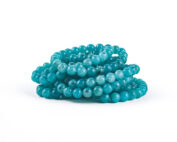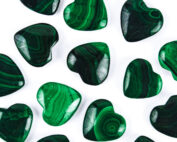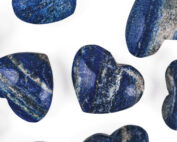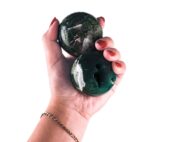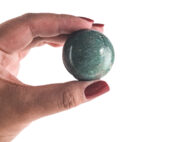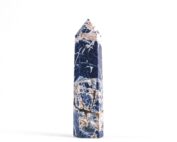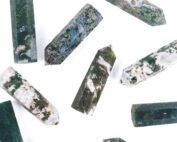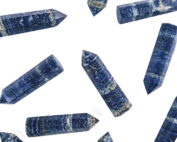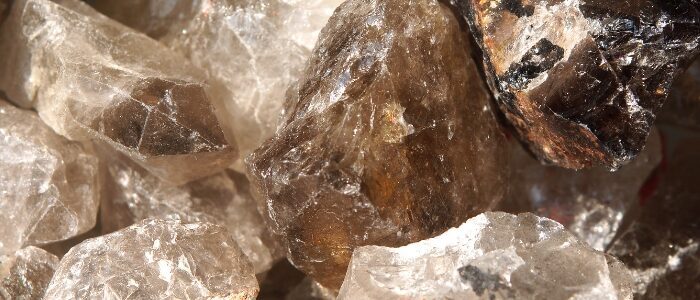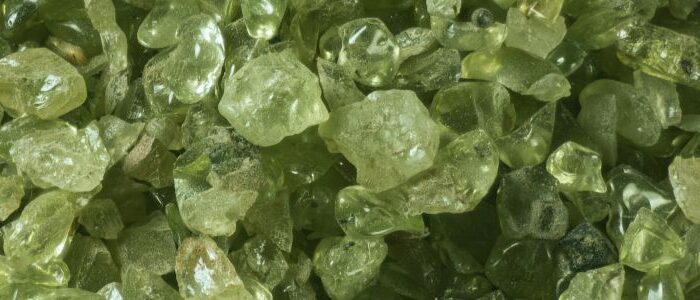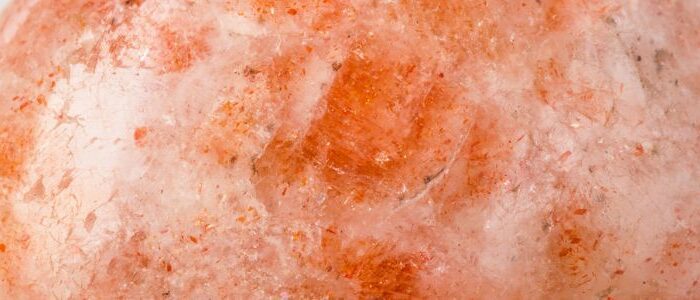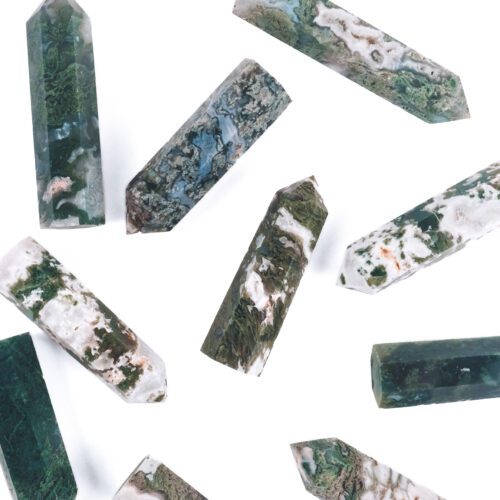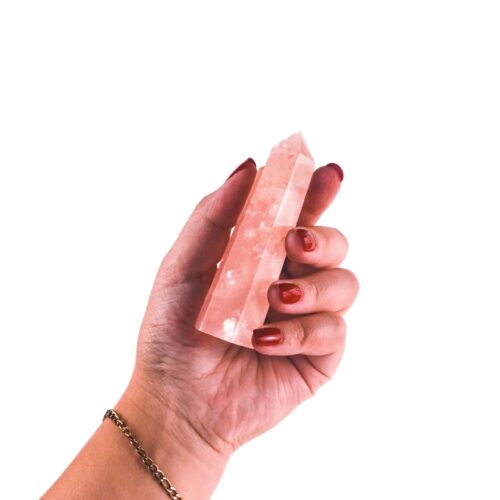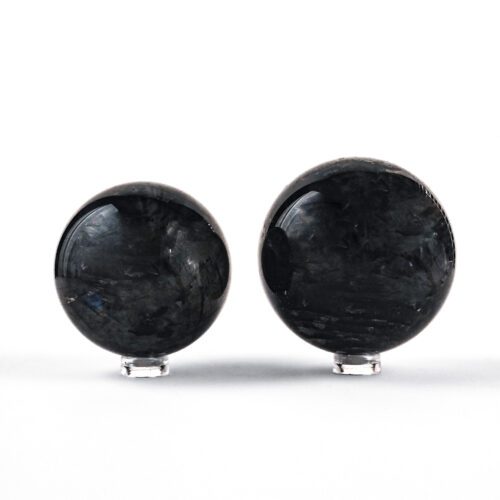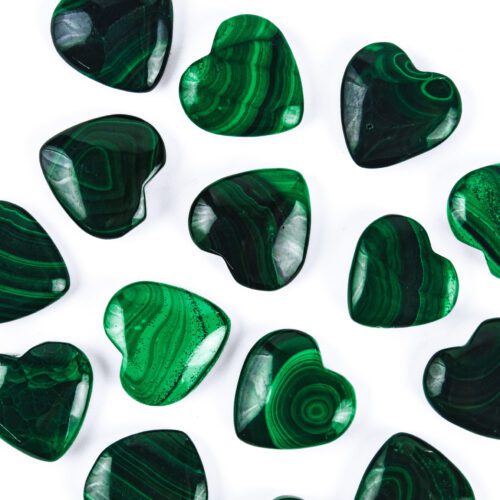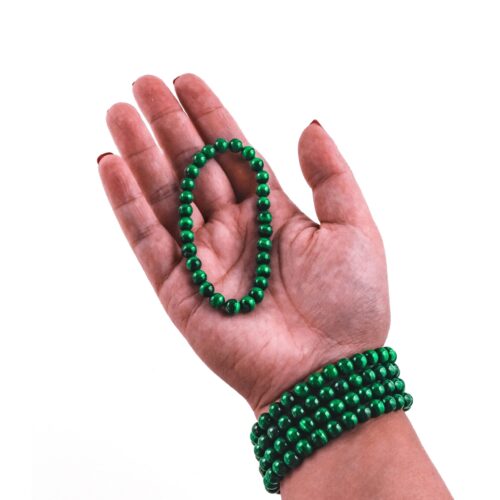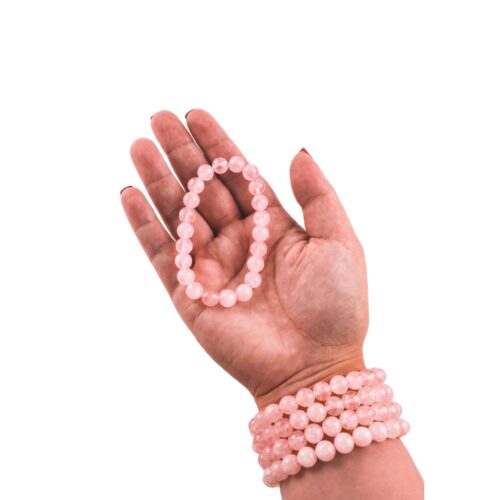Tanzanite Stone: Meaning, Crystal Healing Properties & Benefits
APRIL 17, 2024
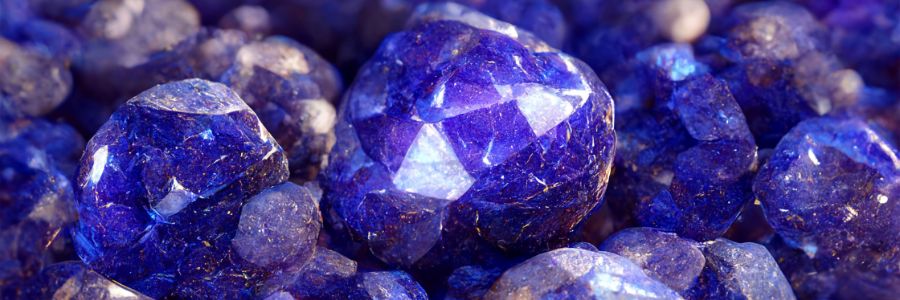
What is Tanzanite Crystal?
Tanzanite crystals are remarkable gems known for their striking appearance, characterized by their ability to display both blue and purple hues depending on the viewing angle.
Technically, tanzanite belongs to the epidote mineral group and is the blue variety of zoisite. The name “tanzanite” was coined by the renowned brand Tiffany and Co., chosen for its more appealing sound compared to “blue zoisite.” Indeed, it adds a touch of pizazz!
Beyond their captivating appearance, tanzanite crystals are celebrated for their transformative qualities and encompass a host of additional benefits and healing properties, which we’ll explore further below.
navigate this article
Tanzanite Meaning & Healing Properties
The key tanzanite meanings are spiritual enhancement, transformation, inspiration, and high vibrations.
SPIRITUAL ENHANCEMENT
Tanzanite acts as a catalyst for spiritual growth, stimulating intuition and fostering a higher consciousness. It serves as a gentle guide for those embarking on a spiritual journey, gradually opening the doors to clairvoyance and psychic powers, making it particularly accessible to beginners.
TRANSFORMATION
This gemstone’s transformative power is calming and soothing. It washes away old habits and patterns, promoting a compassionate heart. Tanzanite aids in conquering communication difficulties by instilling a sense of serenity. It encourages change by allowing individuals to view their emotions from a realistic perspective without dwelling on them.
INSPIRATION
Tanzanite serves as a wellspring of inspiration, unlocking innovative problem-solving abilities and enabling creative thinking. It sparks optimism and fuels the drive to pursue goals. Aligned with the throat chakra, tanzanite fosters effective communication, and encourages authentic expression from the heart.
HIGH VIBRATIONAL ENERGY
Distinguished as a high vibrational stone, tanzanite uplifts the spirit and infuses life with positive emotions. High vibrational crystals, like tanzanite, possess intensified metaphysical properties, making them powerful tools for spiritual and personal development.
Tanzanite Properties & Physical Characteristics
Tanzanite, as mentioned earlier, belongs to the zoisite mineral family and is renowned as a semi-precious gemstone. Its captivating blue hue is attributed to trace amounts of vanadium within the crystal. However, what makes tanzanite particularly remarkable is its unique behavior when subjected to heat. When heated to temperatures exceeding 600 degrees Fahrenheit for more than 30 minutes, the blue color intensifies—this phenomenon occurs infrequently in nature, rendering tanzanite a gem of exceptional rarity.
Another fascinating thing about tanzanite stone is its pleochroic nature. This distinctive quality means that tanzanite exhibits different colors when viewed from different angles, adding to its visual allure.
In terms of durability, tanzanite’s hardness boasts a Mohs rating of 6-7. While slightly softer than crystals like amethyst or citrine, it stands as a resilient gemstone, outpacing the hardness of crystals such as lapis lazuli or malachite. This blend of rarity, unique pleochroism, and reasonable durability contributes to tanzanite’s status as a highly coveted gemstone.
CHEMICAL COMPOSITION –Ca2(FeAl2)(Si2O7)(SiO4)O(OH)
COLOR – Tones of violet blue
HARDNESS – 6-7 on Mohs scale of hardness
STREAK – White or colorless
LUSTER – Vitreous (and pearly on cleavage surfaces)
CLEAVAGE – Perfect in one direction
Where is Tanzanite Found?
Tanzanite is exclusively found in a highly specific location in northern Tanzania, specifically in a small mining area within the Simanjiro District of the Manyara Region. This region is situated near the base of Mount Kilimanjaro.
The original discovery of tanzanite is associated with multiple individuals, leading to conflicting accounts of its true discoverer. Below are the three reported initial finders of tanzanite:
1. Ali Juuyawatu
Ali Juuyawatu, a Maasai tribesman, stumbled upon the blue-violet crystals in 1967. This remarkable discovery occurred after a lightning strike ignited a fire in the Mererani hills of Tanzania. Once the flames were extinguished, the ground lay bare, revealing these precious gems scattered across the terrain. Juuyawatu shared his find with Manuel de Souza, a prospector who had been exploring the land in search of rubies. Initially, it was believed that the stones were sapphires or peridot.
2.Jumanne Mhero Ngoma
Jumanne Mhero Ngoma, employed as a miner, encountered these crystals in the Mererani hills of Tanzania. His significant discovery earned recognition from the Tanzanian government, including a certificate of recognition and a financial reward. In 1984, he was further honored with a certificate for scientific discovery by the Tanzania Commission for Science and Technology.
3.Manuel de Souza
Manuel de Souza, a tailor by trade and an enthusiastic prospector, is attributed with discovering the stones himself in the Mererani Hills, although some accounts suggest he was shown the gems by the tribesman Ali Juuyawatu. Regardless of the specifics, it was Manuel de Souza who played a pivotal role in bringing tanzanite to the attention of gem experts and authorities. His involvement was instrumental in recognizing the unique nature of this gemstone.
Tanzanite Colors & Types
The term “tanzanite” is exclusively used for blue or blue-violet variations of zoisite. When you come across names like pink tanzanite or red tanzanite, they are actually referring to different varieties of zoisite and not genuine tanzanite.
In its natural, unheated form, tanzanite’s properties often cause it to exhibit subtle hints of yellow, green, or brown within its blue hue. However, these are mere undertones and not solid colors. The most coveted tanzanite gemstones display a vivid and pure blue color, making them highly desirable.
Consequently, a majority of tanzanite gemstones available on the market have undergone heat treatment to eliminate these non-blue tints, transforming them from brownish-green zoisite into the exquisite blue gemstone we recognize as tanzanite. This process not only enhances availability but also makes tanzanite more affordable.
Truly natural, unheated tanzanite gemstones of exceptional quality are exceedingly rare and held in high esteem within the gemstone world.
Tanzanite Benefits & Uses
Tanzanite, a captivating gemstone that enchants the beholder, is best experienced by incorporating it into your jewelry collection. While rings are the most conventional choice, tanzanite stones can be elegantly featured in earrings, necklaces, and bracelets as well. Regardless of your personal style, you’re bound to discover a piece of tanzanite jewelry that resonates with your taste and preferences.
Caring for Your Crystal – How to Clean Tanzanite Stones
From time to time, our cherished gemstones may accumulate both physical and energetic impurities. To cleanse your tanzanite crystal physically, immerse it in warm, soapy water for half an hour, then rub away any residue with a soft cloth before rinsing it thoroughly.
But don’t forget the importance of energetically cleansing and charging your tanzanite to maintain its status as a powerful healing crystal!
HOW TO CLEANSE TANZANITE – Use breathwork to purify your tanzanite stone. This straightforward yet potent technique simply involves holding the tanzanite crystal in front of your face, taking deep breaths through your nose, and exhaling forcefully onto the crystal for several breaths to replenish its energy.
HOW TO CHARGE TANZANITE – Harness the energies of a full moon by placing your tanzanite on a windowsill where it can bask in the moon’s radiant rays, revitalizing its high vibrational energy.
Tanzanite Chakra Placements
Tanzanite’s chakra placements are the throat, third eye, and crown.
The body can be thought of as an energetic temple, with seven unique chakras that dance along the spine. These chakras are the body’s energy hubs – absorbing, transforming and radiating energy throughout the body. By keeping them in balance, we can tap into our inner wisdom, ignite our passions and elevate our wellbeing.
THROAT CHAKRA – Governing communication and self-expression, tanzanite supports the throat chakra by promoting clear and truthful communication. It encourages individuals to express themselves authentically and creatively, facilitating open and honest interactions.
THIRD EYE CHAKRA – Representing intuition, insight, and self-awareness, tanzanite helps balance the third eye chakra. It fosters deep self-awareness, clarity of thought, and the capacity to perceive deeper truths and realities.
CROWN CHAKRA – Located at the top of the head, the crown chakra signifies spiritual awareness and a connection to higher consciousness. Tanzanite aids in opening this chakra, leading to profound feelings of connection to the divine, a sense of purpose, and inner peace.
Tanzanite Birthstone & Zodiac
December babies are fortunate to have the lovely blue tanzanite as one of their birthstone options, officially recognized in 2002. Alongside tanzanite, December also boasts zircon, turquoise, and blue topaz as its birthstones.
Tanzanite birthstones are associated with two zodiac signs: Sagittarius and Capricorn.
SAGITTARIUS
Sagittarians are known for their honest and straightforward communication, which aligns perfectly with tanzanite’s throat chakra properties.
However, Sagittarius individuals may sometimes struggle with transformation, displaying impatience, restlessness, and commitment issues.
Tanzanite steps in as a stabilizing force, helping Sagittarians keep their emotions in check, analyze them without becoming overwhelmed, and navigate changes with a composed demeanor and excellent problem-solving skills.
CAPRICORN
Determined and task-oriented, Capricorns excel at getting things done but can occasionally come across as distant or overly serious. Expressing emotions might not be their strong suit.
Tanzanite’s association with the throat chakra offers assistance by enhancing effective communication for Capricorns. This allows others to understand their emotions without misinterpretation, fostering a deeper connection and dispelling unrealistic expectations.
Tanzanite Stones vs. Other Crystals
Because of its purpley blue coloring, rarity, and desirability, tanzanite is often compared against other precious and semi precious gemstones. Below we break down some of the key differences.
| GEMSTONE | COLOR | RARITY | PRECIOUS STATUS | MOHS HARDNESS | DURABILITY |
|---|---|---|---|---|---|
| Tanzanite | Blue, blue-violet | Relatively rare | Semi-precious | 6-7 | Moderate to good |
| Sapphire | Blue | Commonly found | Precious | 9 | Excellent |
| Amethyst | Purple | Abundant | Semi-precious | 7 | Good |
| Diamond | Colorless | Relatively rare | Precious | 10 | Excellent |
Tanzanite vs. Sapphire
While tanzanite and sapphire share a similar blue color, tanzanite is actually rarer in its natural form compared to sapphires. In terms of hardness, sapphires are tougher with a rating of 9 on the Mohs scale, whereas tanzanite falls in the range of 6-7. Additionally, sapphires are classified as precious gemstones, while tanzanite is considered semi-precious.
Tanzanite vs. Amethyst
Both tanzanite and amethyst exhibit purple hues, but they are easily distinguishable as amethyst predominantly falls within the purple spectrum, whereas tanzanite leans toward a purple-blue range. Both gemstones are classified as semi-precious, but amethyst is notably abundant, resulting in a more affordable price point. In terms of hardness, they are relatively similar.
Tanzanite vs. Diamond
Tanzanite and diamonds are distinct in several ways. While diamonds are renowned for their colorlessness, tanzanite is inherently bluish in hue due to its association with blue zoisite. Diamonds top the Mohs scale as the hardest minerals, boasting a perfect 10 rating, whereas tanzanite falls in the 6-7 range. Furthermore, diamonds are considered precious gemstones, whereas tanzanite does not hold the same status.
A Final Note
Whether you’re boasting your status as a festive December baby, are seeking inspiration, or aiming to elevate your spiritual consciousness, tanzanite is the stone for you. Adorn yourself with this captivating blue crystal and experience the profound impact of its high vibrations and powerful tanzanite meanings and benefits.
shop crystal database
continue learning








